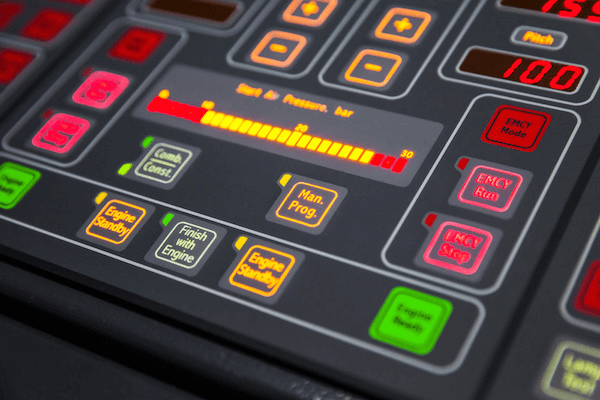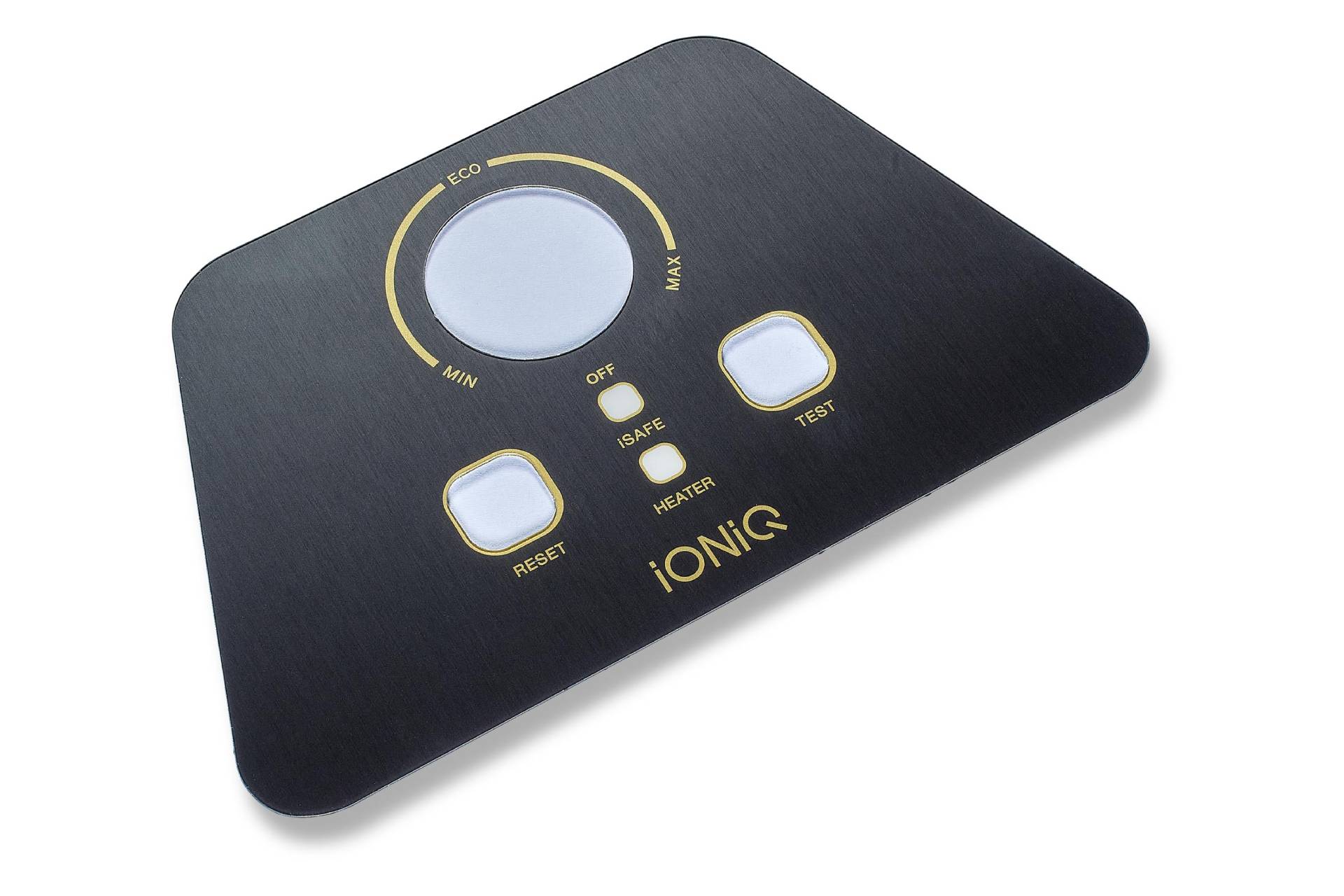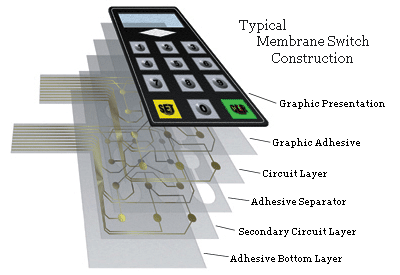International Membrane Switch Manufacturer with Adaptive Production Options
International Membrane Switch Manufacturer with Adaptive Production Options
Blog Article
Exploring the Manufacturing Process of Membrane Switch for Various Industries
The manufacturing process of Membrane buttons is an intricate endeavor that requires precision and interest to detail. From selecting proper materials to applying rigorous top quality control measures, each action plays an important duty in guaranteeing capability. Various sectors, consisting of clinical and vehicle, depend on these components for their unique applications. Understanding the intricacies of this process exposes considerable understandings into just how these switches are produced and their influence across varied markets.
Comprehending Membrane Changes: An Introduction

Trick Products Used in Membrane Switch Production
In Membrane switch manufacturing, the option of essential materials substantially affects capability and sturdiness. Conductive products, adhesives, and finishings play essential functions, while substrate choice influences total efficiency and dependability. Understanding these components is vital for maximizing the style and production of Membrane buttons.
Conductive Materials Summary
Conductive materials play an essential role in the capability of Membrane buttons, guaranteeing trustworthy electric connections within the device. Typically made use of materials include silver, copper, and carbon-based inks, each offering distinctive advantages. Silver is preferred for its high conductivity and longevity, making it excellent for applications calling for durable performance. Copper, while somewhat less conductive than silver, is a cost-effective option usually used in printed circuits. Carbon-based inks offer a flexible option, appropriate for applications where versatility and lower costs are prioritized, although they have lower conductivity compared to steel options. The option of conductive products straight impacts the overall integrity, life expectancy, and efficiency of the Membrane button, making it an essential consideration in the production procedure.
Adhesives and Coatings
Adhesives and coverings are vital parts in the production of Membrane switches, supplying crucial bonding and protective homes. These products assure that numerous layers of the button, including graphic overlays and circuitry, adhere safely to each other, boosting toughness and capability. Typically utilized adhesives consist of pressure-sensitive adhesives (PSAs) and epoxy-based solutions, which provide strong adhesion and strength. Coatings, such as polyurethane or acrylic, offer to protect against environmental variables, consisting of moisture, abrasion, and chemicals. Furthermore, finishes can improve responsive comments and visual appeal, adding to the general customer experience. The selection of proper adhesives and finishings is vital for maximizing performance and durability in varied applications throughout various markets, guaranteeing that Membrane switches over satisfy details functional demands.
Substratum Option Factors
Substratum choice plays a vital role in the manufacturing of Membrane switches, as it greatly affects their overall efficiency and toughness. Key materials such as polyester, polycarbonate, and flexible printed circuit card (FPCBs) are generally made use of for their distinctive properties. Polyester is preferred for its cost-effectiveness and resistance to abrasion, making it suitable for applications with high wear. Polycarbonate offers exceptional quality and impact resistance, perfect for settings calling for high visibility. FPCBs give improved adaptability and are often utilized in intricate styles. The option of substrate additionally impacts aspects like thermal security, chemical resistance, and simplicity of printing. Ultimately, selecting the suitable substratum is essential for ensuring the performance and long life of Membrane switches over across various industries.
The Layout Refine of Membrane Changes
The layout procedure of Membrane buttons is an essential phase that considerably influences the performance and visual appeals of the final product - membrane switch manufacturer. It starts with defining the certain demands of the application, consisting of measurements, switch design, and tactile responses preferences. Developers have to take into consideration individual communication, guaranteeing that the button is intuitive and accessible.Next, materials are picked based upon longevity, adaptability, and environmental resistance. The integration of graphics and branding components is likewise essential, as it boosts visual allure and communication. Prototyping permits iterative screening, enabling adjustments based on customer feedback and performance evaluations.Additionally, the design needs to represent the electrical parts, such as ports and circuits, making sure reliability and convenience of use. Inevitably, a successful layout harmonizes performance, aesthetics, and customer experience, paving the method for reliable manufacturing and durable efficiency in different markets
Printing Methods for Membrane Changes
The printing strategies utilized in Membrane button manufacturing play a necessary duty in identifying the end product's high quality and performance. Display printing provides advantages such as toughness and dynamic color application, while digital printing developments offer flexibility and precision in style. Understanding these techniques can greatly impact the general effectiveness of Membrane buttons in numerous applications.
Screen Printing Advantages
Many benefits make screen publishing a preferred method for generating Membrane switches. This approach permits high-grade, lively colors and comprehensive designs, which are necessary for interface applications. Display printing is particularly reliable for applying thick ink layers, boosting durability and tactile comments. In addition, it supplies outstanding attachment to various substratums, making sure durability sought after settings. The process is affordable for big production runs, as it minimizes configuration time and waste. Additionally, screen printing supports a vast array of inks, consisting of specialized and UV-curable options, enabling convenience in style. Its capacity my explanation to produce regular results throughout numerous systems makes it a trusted option for suppliers intending for top quality and effectiveness in Membrane button production.
Digital Printing Innovations

Developments in digital printing innovation are changing the manufacturing of Membrane buttons, offering producers innovative remedies that enhance style versatility and efficiency. Digital printing permits high-resolution graphics and elaborate layouts, making it possible for personalized branding and performance without the restrictions of traditional methods. This method reduces arrangement times and prices, assisting in shorter manufacturing runs and marginal waste, making it optimal for organizations with differing demands. Furthermore, developments in ink formulations offer much better sturdiness and adhesion, making certain long life in numerous settings. As sectors significantly look for customized and complex styles, electronic printing stands out as an important strategy, setting a new criterion in Membrane button production. The combination of these developments positions manufacturers to fulfill advancing market requires properly.
Assembly and Layering of Membrane Switch Components
Cautious assembly and layering of Membrane button components are necessary to ensuring performance and sturdiness. This process begins with the specific positioning of different layers, consisting of the graphic overlay, glue, circuit layer, and support product. Each part must be very carefully placed to keep electric stability and user interface responsiveness.During assembly, conductive traces are related to the circuit layer, generally made from materials like polyester or polycarbonate. This layer is essential, as it beams when pressure is used. The sticky used for bonding these layers is additionally chosen for its ability to sustain ecological stress and anxieties while preserving a safe and secure bond.Heat and pressure are frequently used throughout the setting up procedure to ascertain that the layers adhere appropriately without endangering the capability of the switch. Focus is provided to the side sealing to secure versus moisture and impurities, securing the long life of the Membrane switch in various commercial applications.
Quality Assurance Procedures in Membrane Switch Production
Quality assurance procedures play an important role in guaranteeing the dependability and performance of Membrane switches following the assembly and layering of their components. In the production process, several vital evaluations are conducted to copyright top quality requirements. These include visual inspections for defects in printing and adhesive application, along with functional examinations to verify the responsiveness of each switch.Additionally, ecological screening is carried out to analyze the switches' sturdiness versus temperature changes and humidity exposure. Manufacturers typically implement statistical process control (copyright) strategies to keep an eye on production uniformity, making it possible for early detection of anomalies.Furthermore, traceability systems are developed to track materials and parts, guaranteeing liability and promoting recalls if necessary. Calibration of equipment and adherence to market requirements are also important to preserving product integrity. Jointly, these quality assurance procedures protect the performance of Membrane switches across various applications, eventually boosting consumer contentment.
Applications of Membrane Changes Across Different Industries
Membrane switches are utilized across a diverse variety of sectors, showcasing their convenience and adaptability. In the medical field, they provide waterproof and trusted interfaces for gadgets such as diagnostic tools and mixture pumps, ensuring health and ease of usage. The automotive sector employs Membrane switches for dashboard controls, making it possible for seamless interaction in between the vehicle driver and go to these guys automobile systems.In consumer electronics, these switches are discovered in devices and handheld gadgets, offering a smooth, modern-day aesthetic while boosting functionality. Industrial applications additionally utilize Membrane switches over for machinery control panels, where resilience and resistance to rough conditions are essential.Furthermore, the aerospace and protection industries use Membrane switches for cockpit instrumentation and interaction systems, prioritizing integrity and performance under severe conditions. Generally, Membrane buttons play an important duty in improving the individual experience and functional effectiveness throughout different domain names.
Often Asked Questions
For how long Does It Take to Manufacture a Membrane Layer Switch?
The production time for a membrane button usually varies from a few days to a number of weeks - membrane switch manufacturer. Aspects affecting this period include style complexity, product availability, and production quantity, all impacting the general timeline significantly
What Is the Common Lifespan of a Membrane Layer Switch?
The regular life expectancy of a membrane layer button usually varies from 1 to 5 million actuations, relying on factors such as worldly top quality, ecological conditions, and usage regularity, considerably impacting sturdiness and total efficiency.
Can Membrane Changes Be Customized for Details Applications?
Membrane switches can without a doubt be customized for particular applications. Their style adaptability permits alterations in dimension, form, colors, and graphics, making sure compatibility with unique requirements throughout numerous industries and boosting performance and customer experience.

Are Membrane Switches Over Environmentally Pleasant?
The environmental effect of Membrane switches varies. Some materials utilized may not be eco-friendly, while developments in manufacturing procedures are significantly concentrating on sustainability, aiming to minimize waste and promote recyclable components in their production.
What Are the Typical Failing Modes of Membrane Buttons?
Common failing settings of Membrane switches consist of delamination, sticky failing, deterioration from use, wetness access, and electric failings. These concerns can significantly affect performance, efficiency, and life-span in numerous applications throughout different sectors. Membrane switches can be personalized to fit certain layout requirements, such as dimension, shape, and performance, making them very adaptable.The click to read construction normally entails several layers, including a graphic overlay, adhesive, and a circuit layer, which function together to develop a smooth user experience. In Membrane button manufacturing, the selection of key products greatly influences capability and resilience. The automobile sector utilizes Membrane switches for control panel controls, allowing smooth communication between the vehicle driver and car systems.In customer electronics, these switches are found in home appliances and handheld devices, offering a sleek, modern visual while boosting functionality. Industrial applications additionally leverage Membrane changes for equipment control panels, where durability and resistance to harsh conditions are essential.Furthermore, the aerospace and protection fields utilize Membrane switches for cabin instrumentation and communication systems, focusing on integrity and performance under severe problems. Membrane buttons can certainly be customized for certain applications.
Report this page